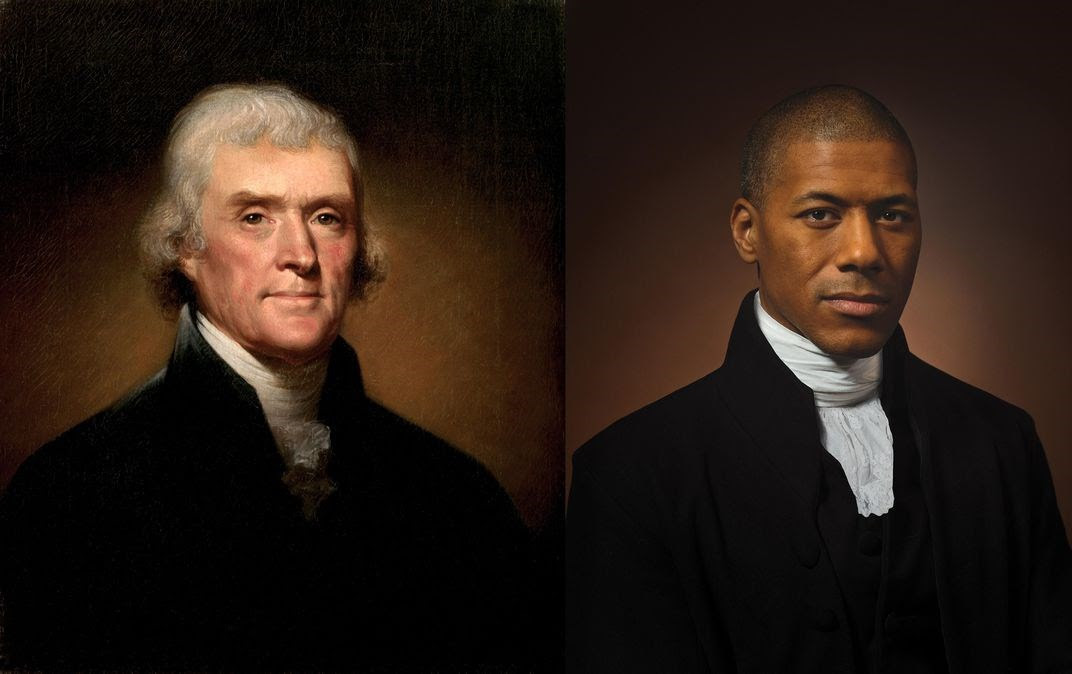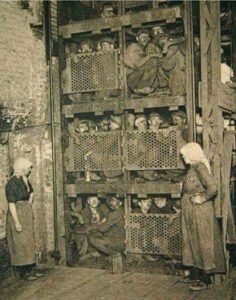09 Aug Family genealogist- August 1, 2020
Contents
An ancestor and a descendant similarly attired 200 years apart.
This image of Thomas Jefferson, alongside his Black great-grandson, Shannon LaNier, who is a TV host in Houston, holds ‘a mirror’ to America. This photo appears in Smithsonian Magazine alongside his direct ancestor, Thomas Jefferson.
Read in NBC News: https://apple.news/AE9ZJ3qW2TuSuQhD0-mywzw.
Let Dancestors find your 200 years ago ancestor, and see how you size up side-by-side! Just click on the red button below.
History tells us that people of all races have been taken against their will and forced to do things they didn’t want to do. Kidnappings are an extreme example of such a situation.
In terms of wholesale Irish slavery, there was not an endorsed institution other than indentured servitude. If you are a slave, your children are born into slavery. Indentured servants had a set length of contract that ended with that person. Read more below about Irish Indentured servants.
Have you seen the photograph to the right on social media? Legal slave trading in the British Empire ended in 1839. Photography was in its infancy at this time, so no photographs of this quality existed. The picture is more than likely a much later photo of miners coming or going out of a mine. Not fun, but not slavery. The image is misused to enhance a false narrative.
Read more about the Irish slavery myth:
https://en.wikipedia.org/wiki/Irish_slaves_myth
 Yes, there were Irish and English indentured servants, but not wholesale legal slavery.
Yes, there were Irish and English indentured servants, but not wholesale legal slavery.
Irish indentured servants were Irish people who became indentured servants in territories under the control of the British Empire, such as the British West Indies (particularly Barbados, Jamaica, and the Leeward Islands), British North America and later Australia.
Indentures agreed to provide up to seven years of labor in return for passage to the New World and food, housing, and shelter during their indenture. Legally it was required that at the end of the seven years, that masters grant them “freedom dues” in the form of either land or capital.
Those transported unwillingly were not indentures. They were political prisoners, vagrants, or people who had been defined as “undesirable” by the English state. Penal transportation of Irish people was at its height during the 17th century, during the Cromwellian conquest and settlement of Ireland (1649–1653). During this period, thousands of Irish people were sent to the Caribbean, or “Barbadosed,” against their will. Similar practices continued as late as the Victorian period, with Irish political prisoners sent to imperial British penal colonies in Australia.
Find out if your ancestors were indentured servants or those that sponsored their transportation by clicking the red button below and contacting Dancestors!



 I see posts on social media about Irish slaves. Was there such a thing?
I see posts on social media about Irish slaves. Was there such a thing? Yes, there were Irish and English indentured servants, but not wholesale legal slavery.
Yes, there were Irish and English indentured servants, but not wholesale legal slavery.